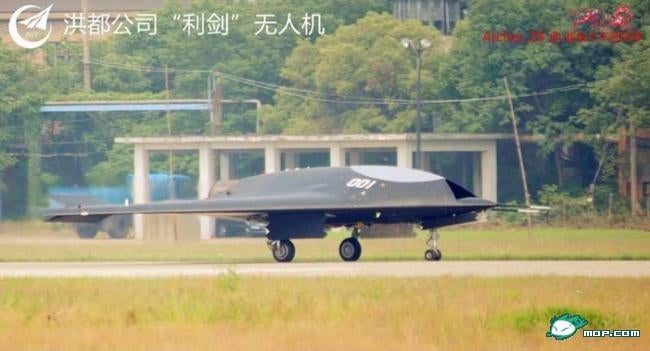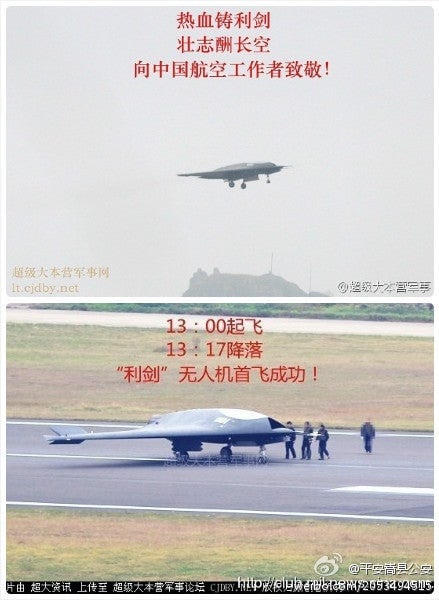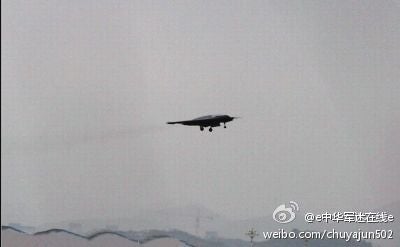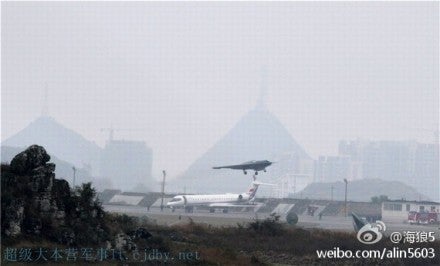China’s first stealth combat drone isn’t all that stealthy. But it doesn’t have to be
For 17 minutes yesterday, China’s first domestically made stealth combat drone swept over the skies of the western city of Chengdu, proclaiming to the world that China can now drop missiles and spy via remote control with enemy radar systems none the wiser. With the successful voyage of the Lijian (“sharp sword”), as the drone is known, China joins the US, the UK and France as the fourth country with jet-powered stealth combat drones.

For 17 minutes yesterday, China’s first domestically made stealth combat drone swept over the skies of the western city of Chengdu, proclaiming to the world that China can now drop missiles and spy via remote control with enemy radar systems none the wiser. With the successful voyage of the Lijian (“sharp sword”), as the drone is known, China joins the US, the UK and France as the fourth country with jet-powered stealth combat drones.
The state-run China Daily says this is a big deal, declaring that China has “again narrowed the air-power disparity between itself and Western nations.”

Others are skeptical. Chinese military bloggers note that, based on the photos, the huge engine compromises its stealth, possibly because the Chinese Air Force has struggled to develop its own engines (links in Chinese). Some suspect that the Lijian is a reverse-engineered version of Russia’s Mikoyan Skat drone, equipped with a Russian-made turbofan engine. Gerry Doyle at Sinosphere concludes that “the stealth features that would make a drone like this a potential balance-shifter remain unproven in this design.”

But though it might not be a game-changer, the Lijian is another landmark in China’s development of drone technology—part of a larger military buildup that the Pentagon worries could prove “potentially destabilizing” in the Pacific, as the New York Times reported last year.

How might the Lijian “destabilize” things in the Pacific? Du Wenlong, a military expert, told Chinese reporters that the Lijian’s combat radius is sufficient (link in Chinese) to patrol the disputed waters around the Diaoyu/Senkaku islands, which both China and Japan claim. It can also provide high-resolution video of activity in the disputed territory, a former People’s Liberation Army major general told the South China Morning Post (paywall).
Used for video surveillance, the Lijian would escalate the tension over the islands, as Rory Medcalf, a security expert at Sydney’s Lowey Institute, says. “So, the Chinese have kind of put Japan into an awkward position. If it lets them pass, or if it lets them fly over disputed, contested airspace then China is further establishing its presence there,” Medcalf told Voice of America News. “But, if Japan strikes back, then it’s really escalating tensions potentially towards conflict.”
In September, Japan deployed fighter jets after spotting an unidentified drone flying near the islands. It also stepped up military exercises in the region throughout October. That same month, Japan’s prime minister, Shinzo Abe, approved a policy to shoot down foreign drones in Japanese airspace, though it’s not clear whether he was including airspace over the water that surround the disputed islands. For its part, China’s defense ministry says that attacking its drones would elicit a “decisive response,” Bloomberg reported.